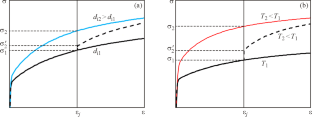Physical Mesomechanics ( IF 1.6 ) Pub Date : 2024-04-16 , DOI: 10.1134/s1029959924020036 A. I. Shveykin , A. A. Vshivkova , P. V. Trusov

|
Abstract
Technological metal forming processes involving hot and superplastic deformation are sensitive to temperature and strain rate. This is because inelasticity mechanisms operate in different ways under different conditions, leading to the formation of different structures and therefore different effective physical and mechanical properties of the material. Optimal temperature and strain rate conditions for the forming process which provide improved performance of the resulting products with acceptable energy consumption (or, conversely, minimum energy consumption with acceptable performance characteristics) can be most effectively determined by mathematical modeling. The key elements of the latter are constitutive models for describing the behavior of the material (physical equations), which account for the influence of temperature and strain rate on various mechanisms of inelastic deformation. Such constitutive models can be most effectively developed using a multilevel approach based on the introduction of internal variables, crystal plasticity, and an explicit description of the material structure and physical deformation mechanisms. There are many works that propose multilevel mathematical models of metals that somehow explicitly account for the temperature and strain rate effects on inelastic deformation. Based on physical considerations, this analytical review defines the most promising approach to constructing multilevel constitutive models with comprehensive consideration of the temperature and strain rate effects.
中文翻译:

金属变形多级本构模型中温度和应变率变化的计算方法(分析综述)
摘要
涉及热变形和超塑性变形的金属成形工艺对温度和应变率敏感。这是因为非弹性机制在不同条件下以不同方式运作,导致形成不同的结构,从而导致材料的有效物理和机械性能不同。可以通过数学建模最有效地确定成形过程的最佳温度和应变率条件,该条件以可接受的能耗(或者相反,以可接受的性能特征最小化能耗)提供所得产品的改进性能。后者的关键要素是用于描述材料行为的本构模型(物理方程),它解释了温度和应变率对各种非弹性变形机制的影响。这种本构模型可以使用基于内部变量、晶体塑性的引入以及材料结构和物理变形机制的明确描述的多级方法来最有效地开发。有许多著作提出了金属的多级数学模型,以某种方式明确地解释了温度和应变率对非弹性变形的影响。基于物理考虑,本分析综述定义了最有前途的构建多级本构模型的方法,并综合考虑了温度和应变率的影响。



























 京公网安备 11010802027423号
京公网安备 11010802027423号